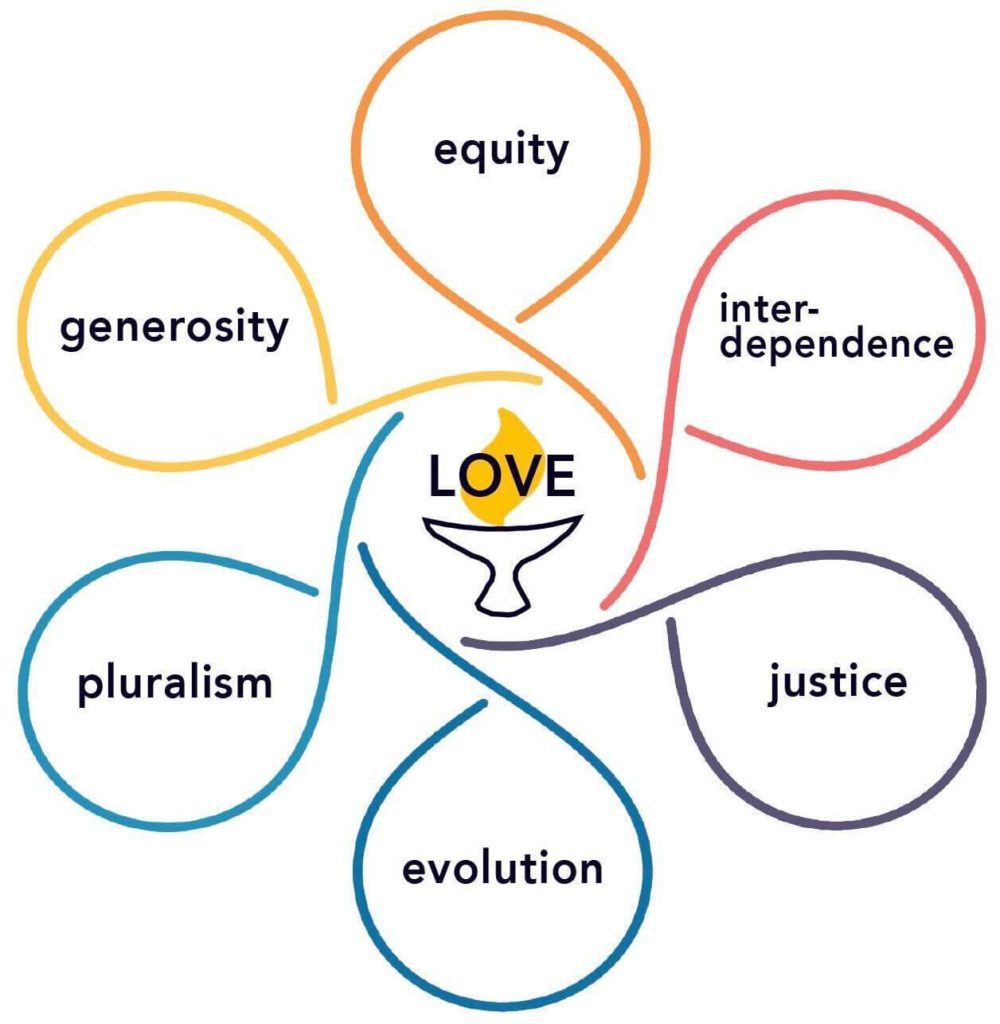Depending on when you were introduced to Unitarian Universalism, the fundamental explanation of our faith could be presented in a few different ways. The Seven Principles and
their explanations were my introduction and remain the foundation of my understanding of my Unitarian Universalist faith. If you’re fairly new, our Seven Shared Values might be your
introduction. Our Shared Values are often represented by the flower or atom image seen below
and by the fun acronym JETPIG which is taken from the first letter of six of the Shared Values.
Many, many words have been written and spoken about the shift to the Shared Values but I’d
like to offer the idea that conceptualizing our values this way is also an act of inclusion.

1 . The Shared Values graphic is shown above with the words “Transformation,”
“Pluralism,” “Generosity,” “Interdependence,” “Equity” and “Justice” are arranged
around a central image of a lit chalice with the word “Love” over the flame.
Everyone processes information differently. Personally, I prefer the written word. I like books and written explanations. I can handle written information much more comfortably than spoken or visual content. This is not true for everyone. Sharing our values is a critical part of explaining our faith, so shouldn’t we make sure we do it in ways that are accessible to more people? The Seven Principles are not gone. They are still dear to me. Still, we must remember that the written word is not the ultimate form of communication for all. We should meet people where they are and connect with them in ways they can receive. For some of us, that’s a heavy book, and for others it might be JETPIG.
I have observed some negative statements about the Shared Values image and JETPIG. Some
call them memes in a derogatory fashion. I think these miss the point. Simplification does not
necessarily remove meaning. It can make it easier to include more people and draw our circle
wider, still.
~Ian Van Sice

Ian, I agree that the JETPIG graphic was a bit difficult for me to embrace at first. However, I now have come to really like it’s simplicity. I believe this will appeal to many others, too, who are new to UUism.
Peggy, I had similar feelings.
I try to consider if changes will allow us to be more inclusive or exclusive. I am not able to separate my own experience and beliefs from my thought processes so there will always be some bias. Still, I think this is a both/and situation rather than either/or. We can have this graphic and the written explanation of our shared values and principles. Both/And will help expand the circle.